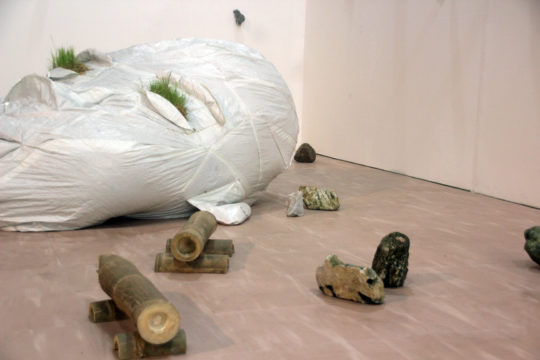
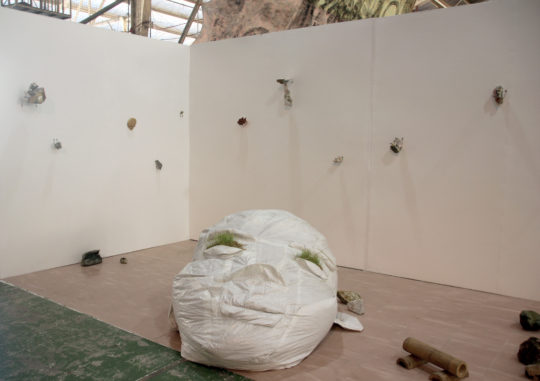
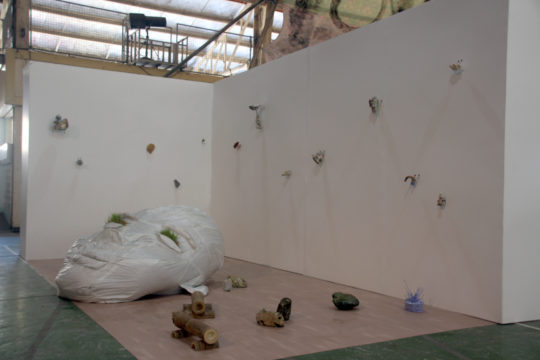
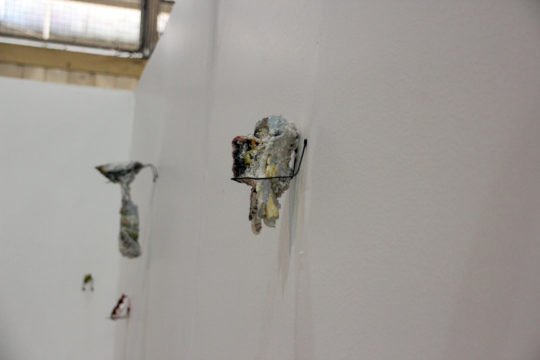
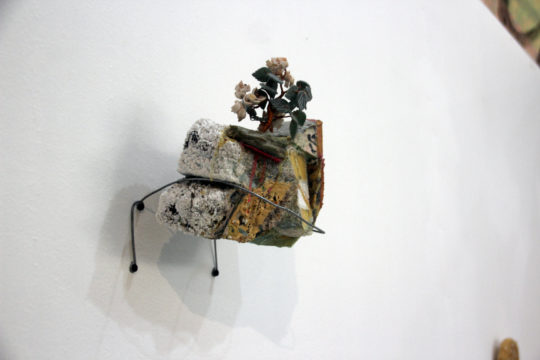
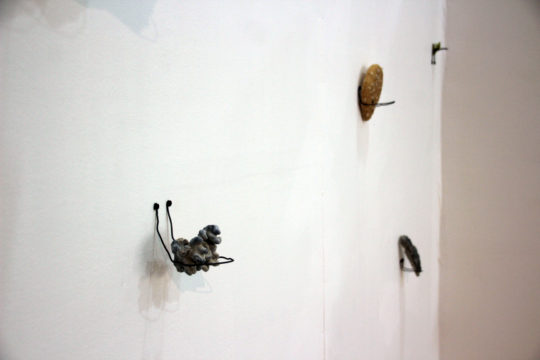
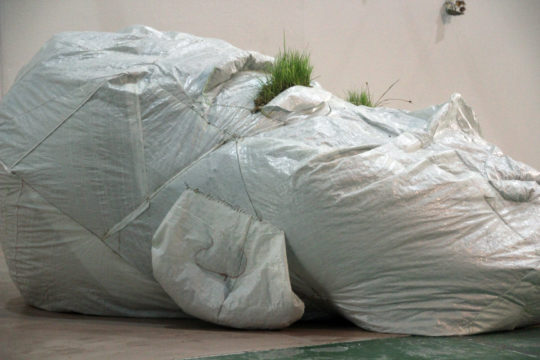
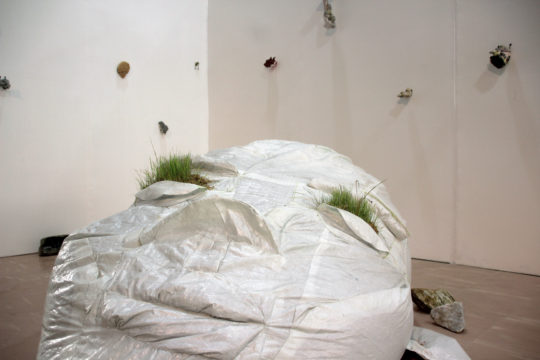
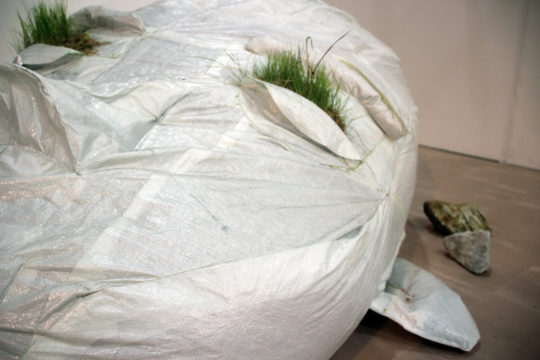

VIVA EXCON – Visayas Islands Visual Arts Exhibition and Conference
Opening Reception: Thursday, November 8, 2018
Conference: November 9 – November 11, 2018
Exhibitions and programs: November 9 – January 31, 2018
` ` ` ` ` ` ` ` ` ` ` ` ` ` ` ` ` ` ` ` ` ` ` ` ` ` ` ` ` ` ` ` ` ` ` ` ` ` ` ` ` ` ` ` ` ` ` ` ` ` ` ` ` ` ` ` ` ` ` ` ` ` ` `
Kinahang-ean bunyagan, 2018, by Kuh Del Rosario
large cranium – woven plastic sack stuffed with rice husks and rice plants on vinyl ground
Small sculptures – polystyrene, carpet underlay, tempered glass, latex, borax crystals, found shells, wood shavings, plaster, cement, sprayfoam, colored inks, volcanic sand, rubberbands, petrified wood, casubha spice, plastic mesh, rubber cement, found ceramic & copper figurine
` ` ` ` ` ` ` ` ` ` ` ` ` ` ` ` ` ` ` ` ` ` ` ` ` ` ` ` ` ` ` ` ` ` ` ` ` ` ` ` ` ` ` ` ` ` ` ` ` ` ` ` ` ` ` ` ` ` ` ` ` ` ` `
In Greece off the island of Mykonos, a couple of hours across the water is a small uninhabited island of Delos. According to myth, the twin gods Apollo and Artemis were born there, giving its other name, Island of the Gods, much gravitas. Aside from the many artifacts discovered in Delos, is the most extensive collection of domestic sculptures from the Hellenistic period. These works adorned peoples’ entryways and gardens, announcing to quite an effect, their owners’ wealth and prestige.
There were sculptures of Deities and Kings. Among them were apparent replicas of more famous artworks of the day. Were these artworks commissioned to hint at affiliations with royalty and gods, elevating the family line? What was most curious – among the Apollos and the Aphrodite’s and Dionysus’, were sculptures made in the image of the homeowners themselves.
Archeological evidence has lead researchers to conclude Delos enjoyed and benefited from a vibrant marketplace, run by merchants from many corners of the world selling exotic goods and materials.
Have the heavens lowered in the eyes of these ancient people? Alternatively, has worldly abundance lead the people to believe their status raised in the level closer to the Kings and Deities that adorned their homes?
What is clear is that the people of Delos were rewriting their personal story through art.
Similarly, Kinahang-ean bunyagan is about reshaping history, as freely as water shapes the land. Kinahang-ean bunyagan strives to be monolithic in gesture but humble in its execution. Though inspired by the remnants of the sculptural self-portraits seen in Delos, Kinahang-ean bunyagan is not in the image of any one person, but an imagined figure, a stand-in for the person who cannot be put together through archeological findings and historical research. Their legacy lives on through the earth, and it’s products, through what’s left of the stories passed on to succeeding generations.
` ` ` ` ` ` ` ` ` ` ` ` ` ` ` ` ` ` ` ` ` ` ` ` ` ` ` ` ` ` ` ` ` ` ` ` ` ` ` ` ` ` ` ` ` ` ` ` ` ` ` ` ` ` ` ` ` ` ` ` ` ` ` `
VIVA EXCON, the Visayas Islands Visual Arts Exhibition and Conference, was initiated by Black Artists in Asia (BAA) in Bacolod City, Negros Occidental, in 1990.
It was an attempt to bridge the islands by linking-up art communities, to provide a venue for sharing knowledge, to discuss issues affecting artmaking in the region, and to consolidate the Visayan art scene. It was created to address the specific urgencies of Visayan artists and cultural workers persisting in the shadows of Manila’s cultural imperialism.
Conceived as a biennial, VIVA EXCON has since been staged in Dumaguete, Iloilo, Cebu, Leyte, Bohol and Samar. The last VIVA EXCON was held in Iloilo in 2016 attended by over 350 delegates and guests.
VIVA EXCON is now regarded as the longest-running biennial in the Philippines. Its 15th edition will be launched on November 8, 2018 in Roxas City, Capiz Province. The conference will be held from November 9-11, 2018, while exhibitions and programs will run until January 31, 2019.
As is customary, VIVA EXCON CAPIZ 2018 will have a multi-site exhibition across the city, particularly activating six main venues with interventions, exchanges and engagements among local communities, Visayan and Filipino artists, and international cultural practitioners. Guided by the curatorial theme “Don’t even bring water (Bisan tubig di magbalon),” a line from the Visayan folk ballad Dandansoy, the exhibitions focus on the aspiration of returning to one’s roots. In the face of limited resources and opportunities, it has been common to desire for the global stage, neglecting in the process one’s place of origin. Each work is a consolatory testament to this economy of means as each artist searches for spaces and semblances of home that require no geographical anchoring.
Alongside this, the 3-day conference at the Gerry Roxas Training and Convention Center will be setting a mirror on itself through:
1. surveying the various art landscapes in the Visayan region; 2. exploring nuanced histories and relevancies of art festivals in the Philippines; 3. assessing successes, strategies and mistakes of cultural platforms in Southeast Asia; and, 4. discerning concrete prospectives for VIVA EXCON.
This two-pronged program calls for a collective remembering and regrounding in hopes of finding the path towards a common future.